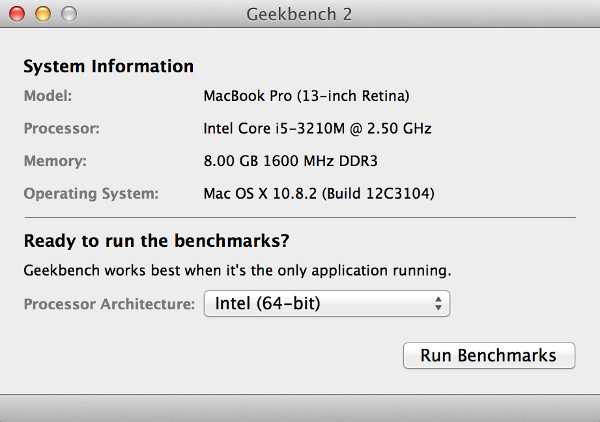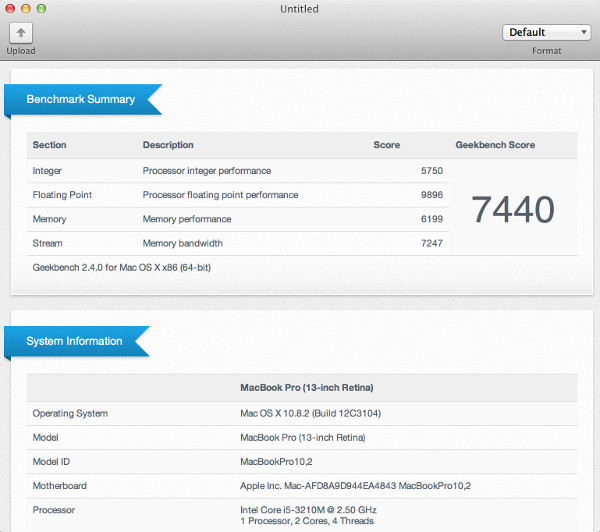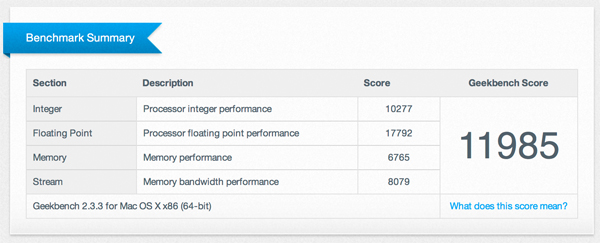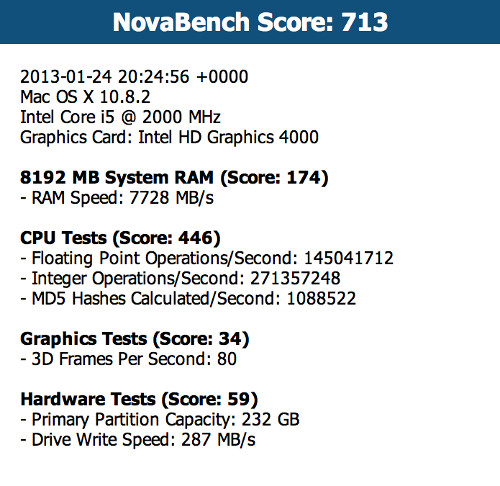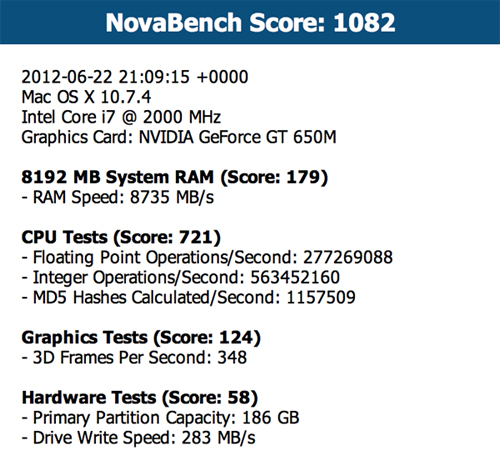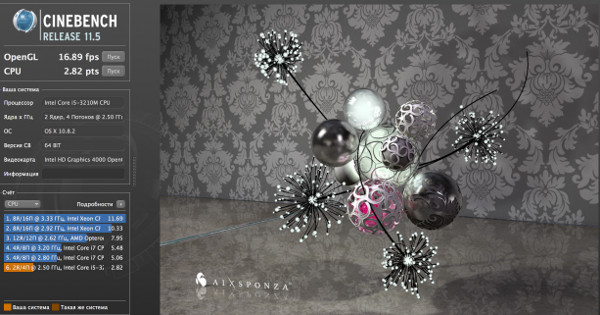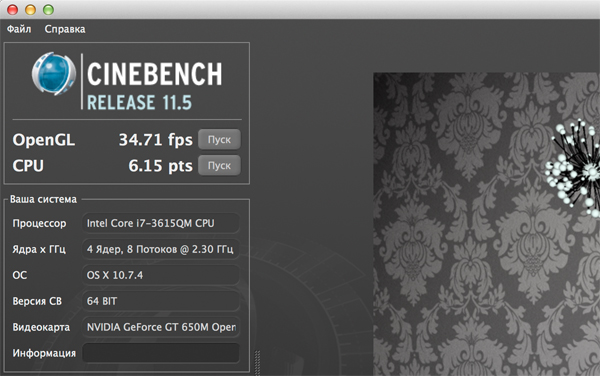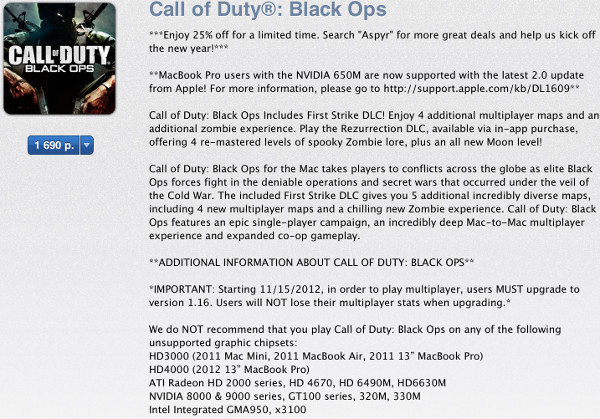Platform
Both late 2012 MacBook Pro Retina models are powered by Intel Core i5-3210M—a 22nm, dual-core Intel Ivy Bridge mobile CPU, supporting Hyper-Threading and Turbo Boost (up to 3.1GHz), and 8GB of DDR3L-1600 RAM. The DDR3L is the same as DDR3, just consumes less power (1.35V 22-nm vs. 1.5V).
Let's assess the CPU and RAM performance in Geekbench 2 and Novabench benchmarks:
Now let's compare it with the results of the first-generation 15-inch MacBook Pro Retina:
The significant difference in processor performance is justified: the 15-inch laptop has a quad-core Core i7, not a dual-core Core i5. However, it's interesting that the newer MacBook Pro loses in terms of RAM performance as well.
The story repeats in Novabench. These are the results of the newer 13-inch laptop:
And this is the score of the early 2012 15-inch MacBook:
As you can see, the 13-inch loses the most in terms of graphics: it has an integrated Intel HD 4000 core while the 15-inch model features a discrete NVIDIA Kepler-based GeForce GT650M.
Next, is the Cinebench 11.2 benchmark. Again, the 15-inch MacBook is faster:
As you can see, the new MacBook Retina isn't made for demanding games. Apple confirms this in a warning on its Call of Duty: Black Ops page:
However, the Retina-optimized Real Racing II did quite nicely:
Currently, the App Store offers fewer than 10 games optimized for Retina displays. The today's hero is surely not a gaming machine.
Nevertheless, the performance of the 13" MacBook Pro Retina is enough for working with documents in Office, images in GIMP, or Web pages in Coda, for example. We haven't tried Final Cut, but such professional video tools are surely aimed at the 15-inch predecessor with the discrete graphics.
Write a comment below. No registration needed!

